The 05 Best BI & Reporting Tools for Amazon Redshift

What is Amazon Redshift?
When it comes to cloud warehouse solutions, Amazon Redshift often tops our mind.
Founded in 2012, Amazon Redshift is an analytical MPP database that companies use to centralize their data. If you wonder about how amazing this product is, think of the fact that it has been leveraged by some of the most popular brands in the world like Lyft, Duolingo, or Yelp.
Although its market share has been threatened by Snowflake in recent years, Redshift has a far greater advantage by being a part of the infamous AWS ecosystem.
Therefore, Redshift has attracted a fair amount of BI partners. In this blog post, I will introduce to you the best BI tools that can leverage Redshift power. Please note that the tools listed below are of no particular order.
The Best BI & Reporting Tools for Amazon Redshift?
- Holistics
- PowerBI
- Tableau
- Looker
- Sisense
Holistics
Holistics is a self-service BI tool that lets data analysts model and transform data in Redshift easily. At the same time, non-technical users can explore the data and find insights on their own using a drag-and-drop interface.
Holistics pledges to become a self-service BI tool with a powerful data modeling capability, which can help analysts create a single source of truth where you can apply business logic to your own data and make sure it is accurate, maintainable, and reusable.
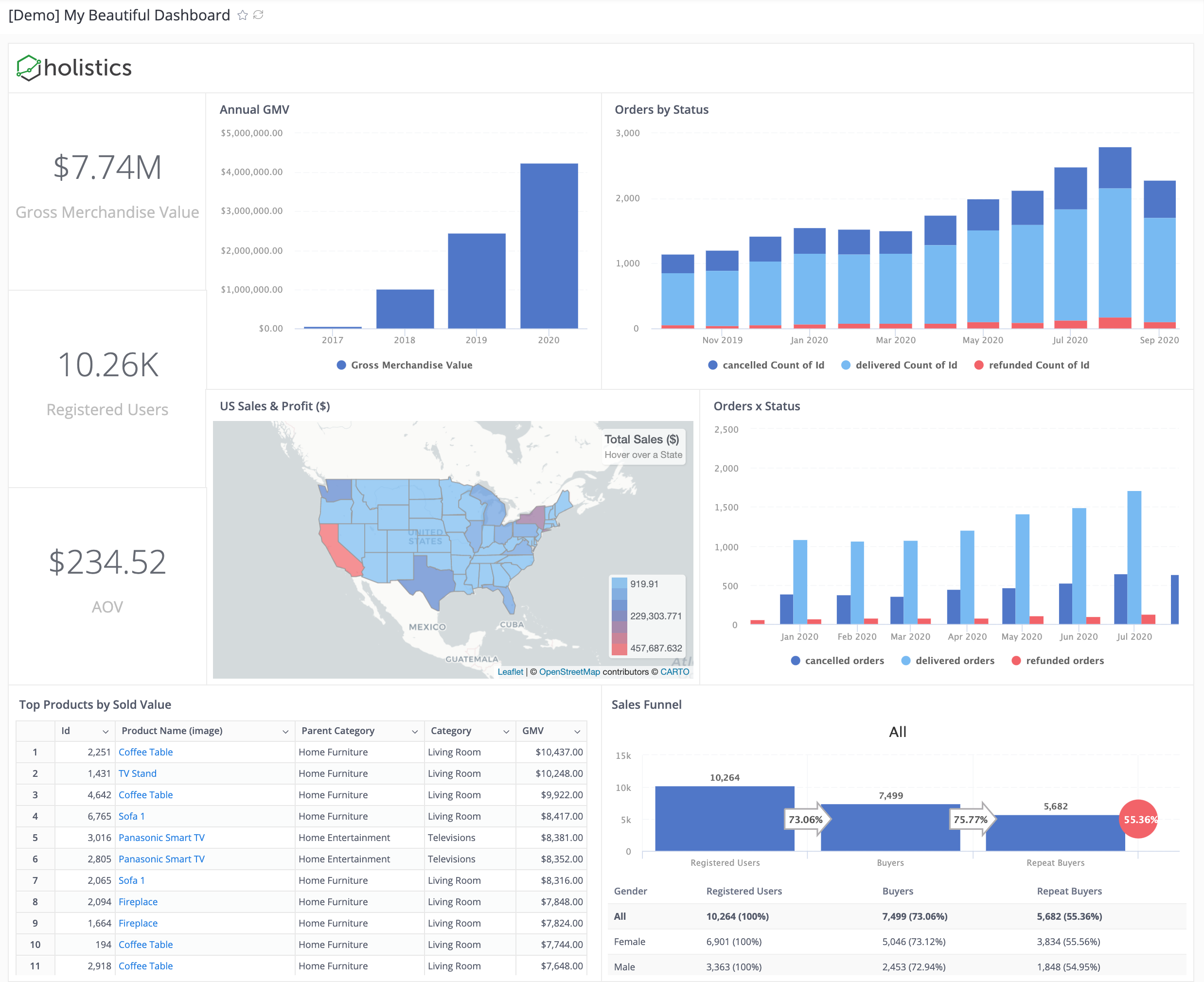
Pros
- Allow you to query Presto using customizable SQL queries and get fast results with its cache layer
- Materialized views of query results are stored back to your own SQL database, for immediate access and fast visualizations and reports.
- Robust code-based semantic modeling layers to help data teams manage data logic centrally and define reusable metrics.
- Automated scheduling of reports and dashboard with the latest data in Presto, sent directly to your email inbox.
- Fast, flexible embedded analytics.
- Drag-and-drop interface for business users to explore data and generate reports to answer ad-hoc questions.
- Canvas-based Dashboards that allow data teams to have full customization over dashboard content, styling, and layout.
- Competitive pay-as-you-go pricing model, which only scales as your company scales.
Cons
- There are a few minor UI difficulties, which can be off-putting for new users.
- Holistics' AQL (analytics query language) is powerful but might come with high learning curve.
PowerBI
If you're an analyst, you must have heard of PowerBI. This famous BI tool supports an impressive number of data sources, giving companies the power to centralize their data in one place.
PowerBI has a user-friendly interface with amazing data visualization capabilities. It will work best if you're already in the Microsoft ecosystem.
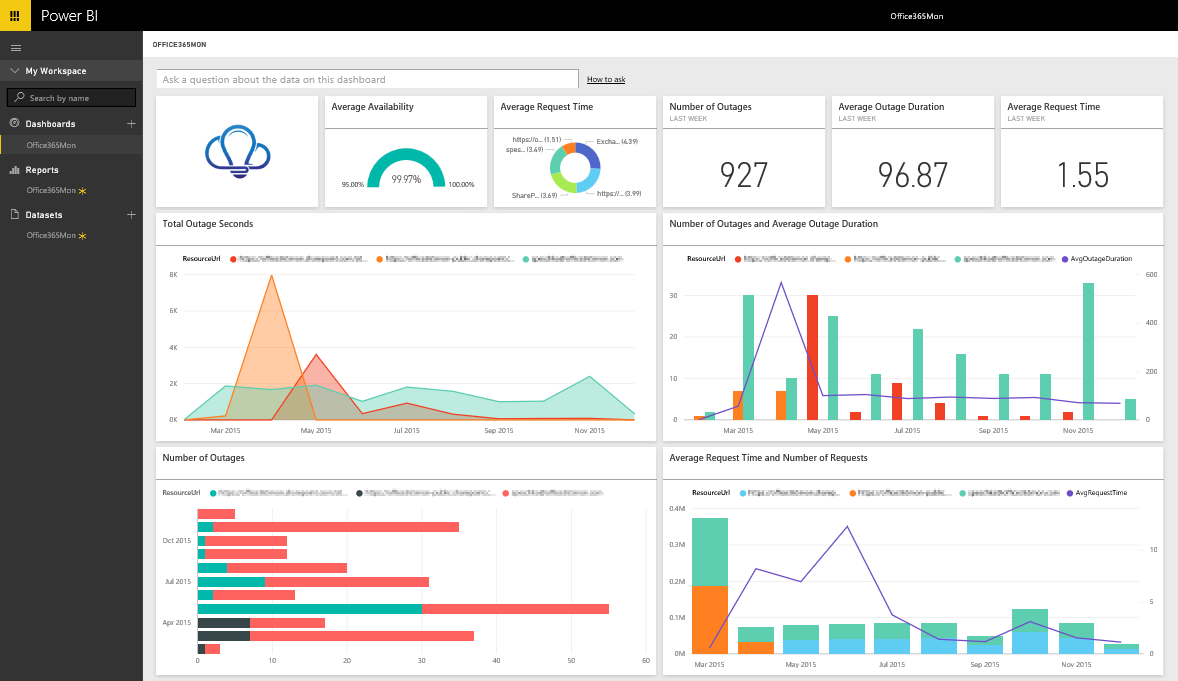
Pricing
PowerBI pricing is also attractive for small-scale companies with small data teams. If you're an individual and only need PowerBI on your local computer to do analysis, then you can download the desktop version for free. However, if you want to use more Power BI services and publish your reports on the cloud, you can take the Power BI Cloud service solution for $9.99 per user per month.
Please note that if your company is concerned about security and on-premise deployment, the price goes up considerably at $4,995 per month, with an annual subscription.
Pros
- Support hundreds of data sources, from cloud services like Redshift to offline files like Excel
- Powerful data visualization capabilities. Besides the basic visualization types, PowerBI allows advanced users to choose from a market place of custom visuals or create their own using well-known Javascript libraries
- Frequent updates and innovations. Follow PowerBI's blog and you will see the team is really active in pushing new features and changes.
- PowerBI has mature data modeling capabilities.
Cons
- PowerBI has a steep learning curve. Data analysts must learn DAX (Data Analysis Expression) language to fully leverage PowerBI's power, which is complicated and rigid sometimes.
- The approach is not collaborative and agile because Data Modeling can only be done on a Windows Desktop (Windows-centric, doesn't support Linux/Mac) then publish to the cloud.
Looker
Another famous name in the BI industry, Looker is a powerful BI tool that provides an innovative approach for real-time data exploration and analytics.
If you are looking for a tool to centralize your business data, look no further because Looker, with its semantic modeling layer, can help you apply business logic to your data and create a single source of truth for every team to use.
New to the Magic Quadrant in 2018, Looker is positioned in the Niche Players quadrant — showing a good balance between Completeness of Vision and Ability to Execute.
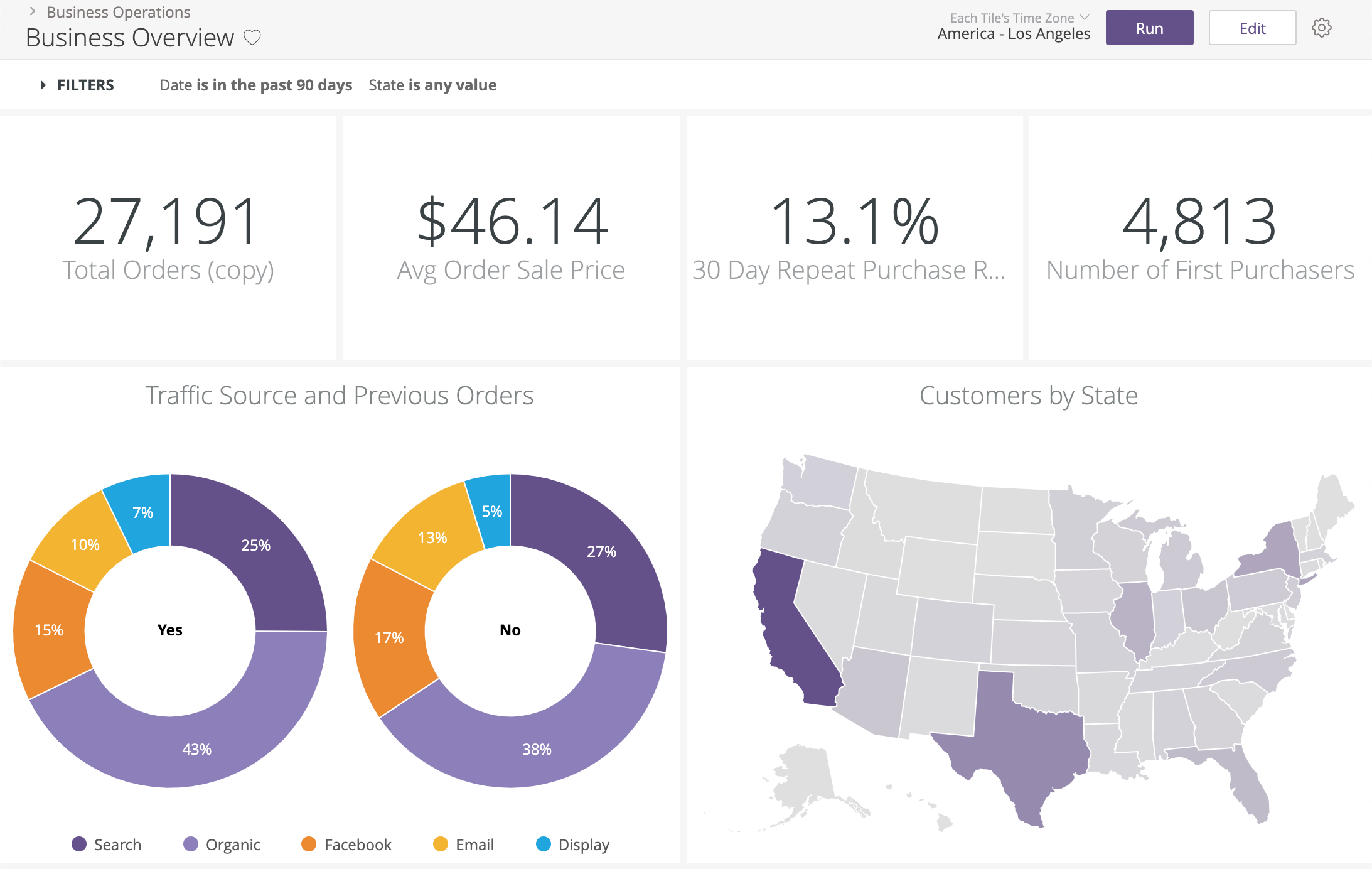
Pricing
Looker does not publicly release its pricing information because it will be customized for each company. Looker pricing could range from $3000 - $10000 per month for 10 users with an annual subscription. As I mentioned above, Looker is designed for companies with mature and dedicated data teams that are willing to adopt a completely new modeling language and spend time setting up Looker to fit their whole data stack.
Pros
- Looker runs entirely in-browser, so there’s no need for desktop install and it's better for collaboration and data delivery between internal and external users
- Looker operates entirely on the data in your database. That means that you’re operating directly on your full dataset and getting all the horsepower of your database, whether that be an MPP like Vertica, Redshift, Bigquery; a SQL-on-Hadoop setup like Impala or Spark; or a standard RDBMS like MySQL or Postgres
- Automated reporting - Looker allows you to schedule emails for daily/weekly/monthly reports or send alerts if there are anomalies in data.
- Looker has GitHub integration, so you can see every change made to the modeling layer and combine the work of multiple developers seamlessly
Cons
- Looker has a steep learning curve when it comes to adopting a new language (LookML) & the model-view approach for the end-users. You definitely need to have an internal team that is dedicated to just setting it up and getting the rest of the people on board.
- Small errors are hard to troubleshoot and result in not using the dashboard much. No SQL CLI makes it disappointing for power users.
- Relative to other BI tools, the advanced charting functionality is somewhat limited
For more detailed BI tool list and analysis, check out:
Tableau
Throughout my career, whenever I'm talking to an analyst who's on the fence about which BI tool to choose, Tableau is always one of the two options.
This is simply because Tableau offers robust visual analytics and data drilling tools across all of its products. Its visualization capabilities are almost second to none in the market and that's why it has attracted lots of companies from big to small.
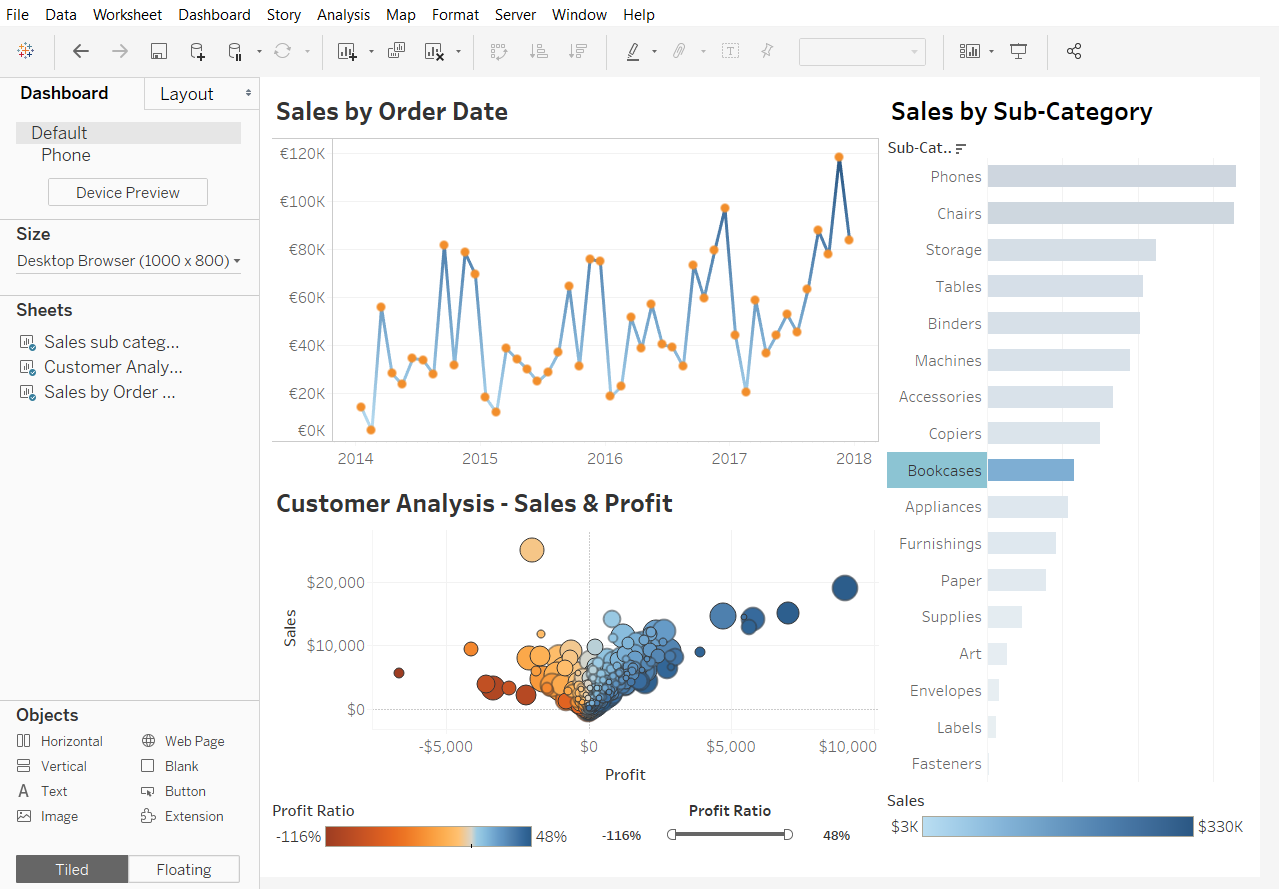
Pricing
Tableau pricing is fairly complicated and is charged both based on your use-case and the number of team members. Moreover, Tableau also charges based on the roles of users, with a Creator costing $70/month, an Explorer $35, and a Viewer $12. Since this number is dependent on your business, you really should plan ahead and prepare for an upsurge of additional costs if you decide to purchase Tableau.
Pros
- Live and in-memory data – Easily switch between extracted data and live connections, set up automatic extract refreshes, and be notified when a data connection fails – all through the Tableau platform.
- Secure collaboration – Use Tableau Server and Tableau Online to securely share and collaborate on key insights.
- Friendly drag-and-drop interface – With drag-and-drop abilities, easily integrate data and create visuals to pinpoint patterns with a few clicks.
Cons
- There are a lot of features on one single interface as Tableau wants to maximize the user experience. But because there is so much on the one single interface that Tableau has, a lot of features go unnoticed and unused. Also since there are so many features and functionalities, it sometimes is difficult to locate a particular functionality
- Lack of BI capabilities. Tableau lacks the functionality required for a full-fledged business intelligence tool, such as large-scale reporting, the building of data tables, and static layouts.
- Tableau Desktop lacks the basic functionality of cleaning and prepping the data to be imported into Tableau Desktop. This is one of the major features which it lacks, you need additional support from Tableau to get these things added.
Sisense
If you knew about Periscope Data, you will know about Sisense. It's an attractive product with substantial data visualization capabilities and a friendly UI that bought Periscope back then at the end of 2019.
The portability, ability to build data cubes in the tool, and the low learning curve are Sisense's greatest advantages that make any other BI tool look behind their back.
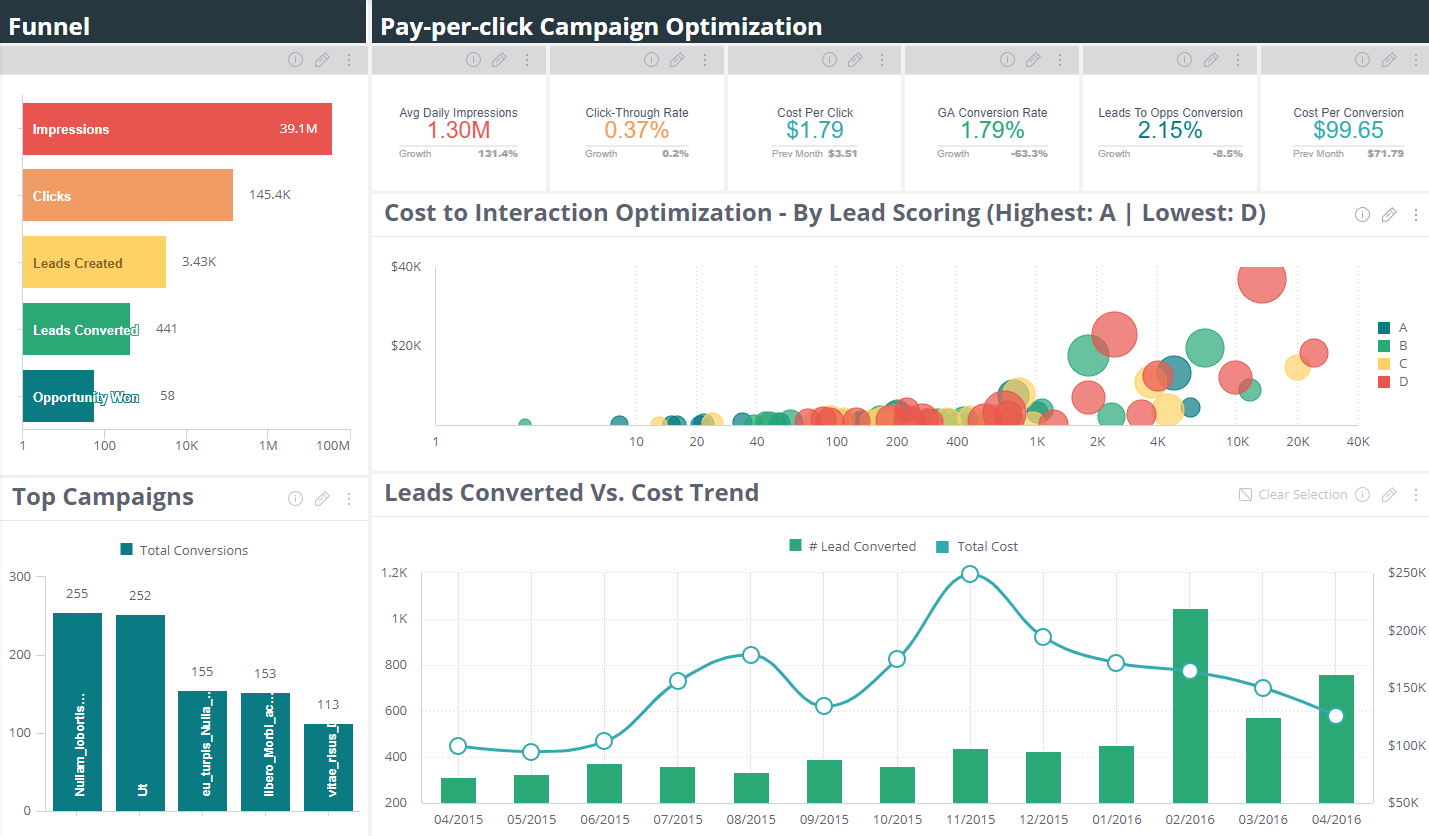
Pricing
Sisense has a custom price for each client, so there's no publicly available fixed number. Based on online forums, looks like its $10,000 a year for a self-hosted solution, and a starting price of $21,000 in the cloud (for 5 users), and can go up to $60,000/year for 12 full users and unlimited viewers.
Pros
- Sisense’s dashboards are well-designed (image above). Sisense provides users with easy-to-understand dashboards that are well-designed with good widgets, varied chart types, and informative KPI and metrics views.
- Web-based JavaScript scripts allow for endless customization. This is a strong advantage that not many other BI tools have.
- Customer support - the commitment to excellent customer service and ensuring organizations get the most out of their investment.
- Handling large datasets very well. Millions of data can be loaded in fewer seconds which didn't seem possible with other traditional reporting tools.
Cons
- Mobile system is not optimized yet and not as intuitive as the desktop version
- Permissions are a pain at times - only the owner of folders and dashboards can publish any changes.
- Be aware that Sisense is a heavy application. It consumes a considerable amount of server power, space and resources, and also the amount of time needed for setup and configuration and user adoption.
Related reading: A Community Crowd-Sourced BI Tools Comparison Matrix (Worksheet Included)
--
Credit: Thumbnail photo by Isaac Smith on Unsplash
What's happening in the BI world?
Join 30k+ people to get insights from BI practitioners around the globe. In your inbox. Every week. Learn more
No spam, ever. We respect your email privacy. Unsubscribe anytime.
